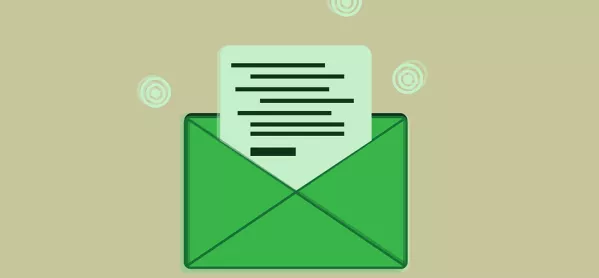It is relatively rare that I’ve found myself feeling sympathetic towards an education state, but over the Easter weekend, Damian Hinds must have just been on tenterhooks waiting to hear what was going to be his fault this time. As it was, among other things, it was email.
According to the NASUWT, teachers are “electronically tethered” to school because of email. General secretary Chris Keates despaired that the education secretary had done nothing to resolve the problem. But what exactly does she expect him to do? Surely, she can’t be arguing for the Department for Education to micromanage every school? That doesn’t seem like the union’s usual angle.
The situation seems all the more odd when you look at the union’s recommendations: it suggests that teachers only read and respond to emails during their directed time. That seems an odd request to me. For many schools, directed time includes a 10-or 15-minute window at the start of the school day before pupils arrive. Should NASUWT teachers arrive to school early so they can prepare lessons and resources before that time, and spend the last few minutes before the day begins tackling emails?
It’s always struck me as an odd argument to focus on the tool rather than the user. My school has been closed for the Easter holiday for the past week, but I’ve still sent five emails during that time. One was to agree release time for a teacher: should I have made her wait for a response until term begins again? Two were to send resources that I’d made to colleagues: should they have been held back until just before the teachers needed them?
Emails aren’t the problem for teachers
The problem with blanket rules about times is that it creates too many unintended consequences. One of the advantages of teaching is the flexibility of the work outside directed hours. There are all sorts of teachers who find that email allows them to achieve a bit more flexibility with their work, allowing them to enjoy a bit more of their life.
Amy is in her first year back after maternity leave. She works three days a week, so her directed time is less than other teachers’. But she does like to be “in the loop”. Her job-share partner keeps in touch with an email about any important issues, and Amy can read them when she likes - either on her days off or when she returns to work.
Jack is in his second year of teaching. On Thursdays he runs the after-school football club before heading off to his own five-a-side team with old college friends. He’d much rather catch up with emails on the bus home using his phone than have to get in 10 minutes earlier each morning.
Mark is a single dad, trying to spend as much time with his family as he can. Two nights a week he aims to leave school shortly after the end of the school day so he can pick up his own children from their after-school clubs. He then spends the evening with them, before completing his own work later in the evening after they’ve gone to bed. Sending and receiving emails at 10pm is not unusual for him.
In all these cases, email can allow teachers to choose when they tackle the wider workload of the job. Issues only arise if there is an expectation of quick response times. If the union really wants to improve workload for teachers, it strikes me that the focus needs to be on the much more difficult-to-tackle area of leadership expectations - and I don’t know that Damian Hinds can fix that.
Michael Tidd is headteacher at Medmerry Primary School in West Sussex. He tweets @MichaelT1979




